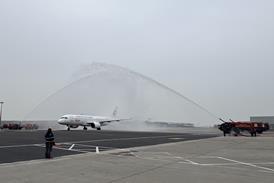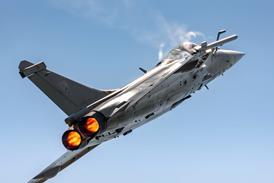Pilot and air traffic controller anti-collision warning systems, in the event of a conflict, can produce a reaction that degrades the effectiveness of both, according to the European air traffic management community.
Eurocontrol's air traffic control domain manager Martin Griffin says: "Many of the identified key issues relate to the fact that short-term conflict alert [STCA - the controller's system] and the airborne collision avoidance system [ACAS - the pilot's system] have been developed independently as separate technological answers to safety concerns."
The issue has emerged from studies carried out by Swiss air navigation service provider Skyguide following publication of the official report on the 1 July 2002 fatal collision between a Bashkirian Airlines Tupolev Tu-154 and a DHL Boeing 757 freighter over Uberlingen, southern Germany.
In that accident there was no clash between the operation of ACAS and STCA because the latter was deactivated for routine maintenance, but the collision happened when the Bashkirian pilot followed a controller instruction to descend just as his ACAS told him to climb.
Independent Swiss studies since then have determined that near-simultaneous operation of STCA and ACAS could result in a similar conflict of instructions causing confusion in the cockpit and the control centre precisely when clarity and quick, accurate action is vital.
In late March, Eurocontrol and Skyguide convened an industry workshop on STCA and ACAS interaction and interoperability in Dubendorf, Switzerland.
The conclusions reached there have been summarised. Griffin says that there is no short-term technological fix available because the two systems are totally independent of each other, and although there is a world standard for ACAS, technical standards for STCA and training for its use vary between users.
He says: "Nobody really understands all the issues because they have not been studied before. We need to gather data to be able to identify the issues."
When they have been identified, he adds, the first action will be to make pilots and controllers aware of the potential pitfalls and how to overcome them.
Since the Uberlingen accident there has been much discussion of the potential for advising controllers - via datalink in real time - of ACAS alerts but it has been accepted that the extra information also has the potential to overload a controller at a critical time.
In the long term, says Griffin, the ideal fix would seem to be a system in which the airborne and ground-based safety net systems were totally co-ordinated - effectively operating as one system.
But any decisions should await the results of a study that will provide hard data on the nature of the existing problem, he says.
| How anti-collision tools work The pilots' airborne collision avoidance system is a transponder-based system that communicates with similar devices on aircraft in the vicinity. In the event of a potential conflict, pilots in each aircraft are presented with an audio and visual "resolution advisory" that tells one aircraft to climb and the other to descend by a prescribed amount. The resolution advisory normally occurs between 25 seconds and one minute before the potential collision. The controllers' short-term conflict alert system causes the on-screen data-blocks of any two conflicting aircraft to flash. The controller normally gets an STCA alert well before the pilots would receive a resolution advisory, but certain types of conflict can cause the airborne and ground-based systems to issue alerts almost simultaneously, which could cause the controller to issue an instruction to a pilot already trying to deal with a resolution advisory. |
|---|
Source: FlightGlobal.com























